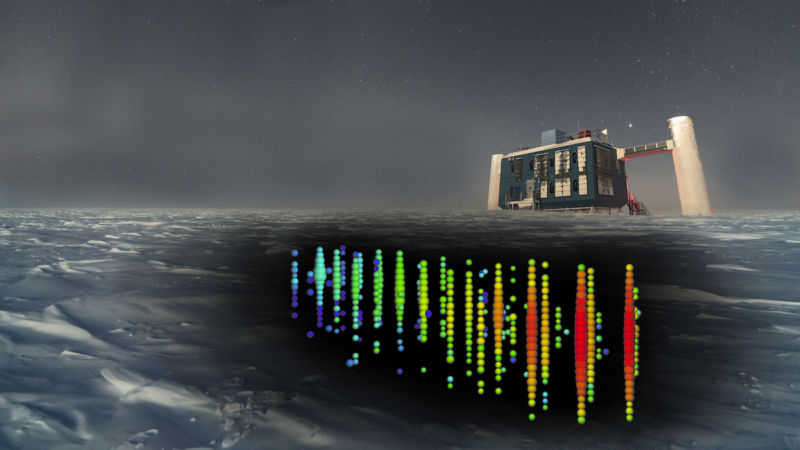IceCube spots a neutrino source: A black hole jet pointed at Earth
Ars Technica » Scientific Method 2018-07-12

Enlarge / Strings of photodetectors under the ice at the South Pole light up when neutrinos interact with the ice. (credit: IceCube/NSF)
For most of astronomy's history, understanding the heavens was limited to what we could see: the narrow band of the electromagnetic spectrum that constitutes visible light. Only over the last century or so have we expanded beyond that, into the infrared and microwaves and up into the higher energies of X-rays and gamma-rays. The past few years have brought an even more fundamental change: we've started detecting astronomical events without photons at all. This was done most famously by LIGO, the hardware that detected gravitational waves. But LIGO was actually late to the game, as the South Pole's IceCube detector had started listening in on cosmic neutrinos a few years earlier.
But in one critical aspect, LIGO beat IceCube to the punch: it spotted an event where the gravitational wave signal was paired with an optical signal, a burst of gamma rays. This marked the first instance of what's being termed "multimessenger" astronomy, where a single event is observed using physically distinct signals.
While IceCube has spotted some phenomenally energetic neutrinos, we've not been able to match those with a specific photon source. As of today, that has changed with the announcement that an energetic neutrino was likely to have been sent our way by a blazar, a supermassive black hole with a jet pointed in Earth's direction.